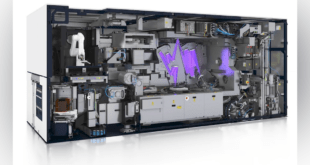Lithium niobate (LiNbO3) is a promising material for integrated photonics, with a wide range of potential applications including telecommunications, sensing, and optical computing.
LiNbO3 is a ferroelectric material, meaning that it has a permanent electric polarization. This polarization can be controlled by applying an external electric field, which makes LiNbO3 an attractive material for electro-optic modulators and switches.
Lithium niobate (LiNbO3) is a unique material that has found many applications in photonics and optoelectronics due to its excellent electro-optic and nonlinear optical properties. One of the most important applications of lithium niobate is in the development of lasers.
LiNbO3 is also a nonlinear optical material, meaning that it can be used to generate and manipulate light at high intensities. This makes LiNbO3 a promising material for lasers, amplifiers, and frequency combs.
For deeper understanding of Lithium Niobate properties and its applications please visit: Lithium Niobate: A Comprehensive Guide to Applications and Advancements
What is a Lithium Niobate Laser?
A lithium niobate laser is a type of laser that uses a lithium niobate crystal as the gain medium. The crystal is usually doped with neodymium (Nd), which serves as the active ion that produces the laser emission. The laser is usually pumped using a flashlamp or a diode laser, which excites the neodymium ions and causes them to emit light.
Lithium Niobate Laser Progress
In recent years, there has been significant progress in the development of lithium niobate lasers. In 2012, researchers at the University of California, Berkeley demonstrated a continuous-wave laser based on a lithium niobate waveguide. This laser was the first to operate at a wavelength of 1.55 micrometers, which is a key wavelength for telecommunications.
In 2014, researchers at the University of Michigan demonstrated a pulsed laser based on a lithium niobate waveguide. This laser was the first to operate at a repetition rate of over 100 gigahertz, which is a key requirement for high-speed optical communications.
These and other recent advances have demonstrated the potential of lithium niobate lasers for a wide range of applications. Lithium niobate lasers are expected to play a significant role in the next generation of optical communications and sensing systems.
EPFL and IBM scientists create new lithium niobate laser technology
Researchers have developed of a new type of laser that could improve the accuracy of medical imaging and other applications.
The laser is based lithium niobate, often used in the field of optical modulators, which controls the frequency or intensity of light that is transmitted through a device. Lithium niobate is useful because it can handle a lot of optical power and has a high Pockels coefficient, which means that it can change its optical properties when an electric field is applied to it.
The researchers achieved their breakthrough by combining lithium niobate with silicon nitride, which allowed them to produce a new type of hybrid integrated tunable laser. To do this, the team manufactured integrated circuits for light (photonic integrated circuits) based on silicon nitride at EPFL, and then bonded them with lithium niobate wafers at IBM.
By directly bonding Si3N4 photonic integrated circuits with thin-film LiNbO3 at the wafer level, they achieved low propagation loss and were able to self-injection lock the laser to a laser diode, which enabled narrow-linewidth lasing. They were also able to electro-optically tune the laser frequency at a fast speed of 12 x 10^15Hz with high linearity and low hysteresis.
The new hybrid platform combines the advantages of both Si3N4 and LiNbO3 materials for precise lithographic control, mature manufacturing and ultralow loss.
The researchers demonstrated the use of this laser for coherent optical ranging (FMCW lidar) experiments.
The approach produced a laser with low frequency noise, which is a measure of how stable a laser’s frequency is, and simultaneously with fast wavelength tuning—both great qualities for a laser used in light detection and ranging (lidar) applications. Then the developers performed an optical ranging experiment in which they used the laser to measure distances with high precision.
Beyond integrated lasers, the hybrid platform has the potential to realize integrated transceivers for telecommunications as well as microwave-optical transducers for use in quantum computing.
“What is remarkable about the result is that the laser simultaneously provides low phase noise and fast petahertz-per-second tuning, something that has never before been achieved with such a chip-scale integrated laser,” said Professor Tobias J. Kippenberg, who led the EPFL side of the project.
Applications of Lithium Niobate Lasers
Lithium niobate lasers have a wide range of potential applications, including:
- Telecommunications: Lithium niobate lasers are well-suited for use in telecommunications systems because they can be operated at high speeds and with low loss. They are also compatible with fiber optic networks, which makes them a good choice for long-distance transmission.
- Sensing: Lithium niobate lasers can be used to create sensors for a variety of applications, including temperature sensing, strain sensing, and chemical sensing. They are also used in optical coherence tomography (OCT), which is a medical imaging technique that uses light to create cross-sectional images of the body.
- Optical computing: Lithium niobate lasers can be used to create optical computers, which are computers that use light instead of electricity to perform calculations. Optical computers are still in their early stages of development, but they have the potential to be much faster and more energy-efficient than electronic computers.
Conclusion
Lithium niobate lasers are a promising new technology with a wide range of potential applications. They are expected to play a significant role in the next generation of optical communications, sensing, and optical computing systems.
 International Defense Security & Technology Your trusted Source for News, Research and Analysis
International Defense Security & Technology Your trusted Source for News, Research and Analysis

